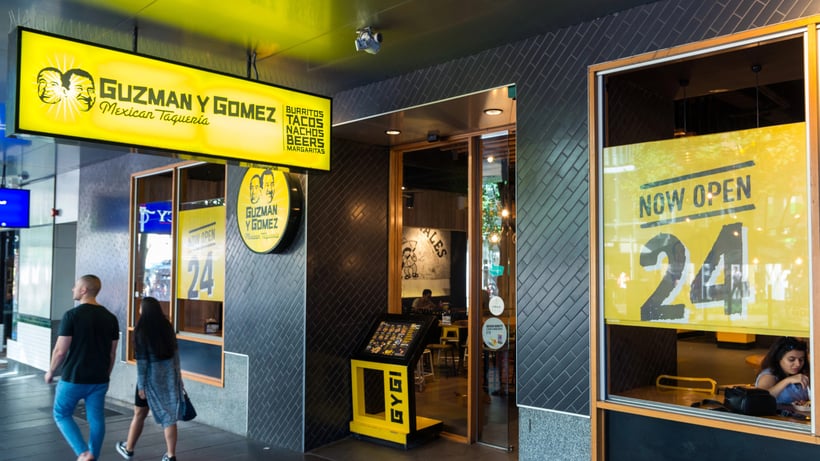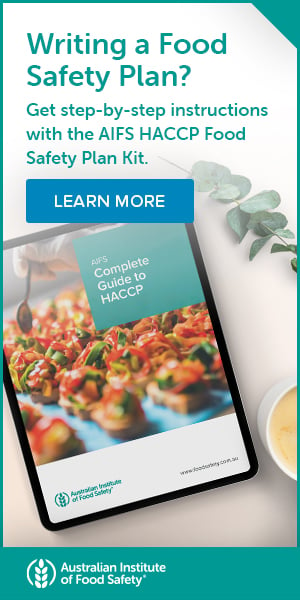
A recent incident at a Guzman y Gomez (GYG) outlet in Brunswick, Melbourne has brought food safety practices in Australian quick-service restaurants back into the spotlight.
Captured by a stunned customer, an 18-second video shows a GYG staff member wearing shoes and standing on a flat-top hot plate used for cooking food, attempting to clean overhead extractor vents. The clip has sparked significant public concern, raising questions about hygiene, training and the visible food safety culture within popular hospitality chains.
A significant safety risk
The actions seen in the video pose a significant risk to both the worker and food safety. Using cooktops in this manner increases the chance of slips, burns or equipment damage. It also introduces the potential for contamination of food contact surfaces.
Source: TikTok/niiittiiishh
Though the grill was not actively cooking at the moment of contact, it is still classified as a food preparation surface. Contamination from shoe soles, which may carry bacteria, dirt or cleaning chemicals, violates basic food safety protocols. Additionally, the proximity of food actively cooking nearby only heightens the risk of contamination.
GYG's response
GYG responded to the footage by acknowledging that the behaviour was “not in line with GYG's procedures or standards that our crew are trained on.”
The chain emphasised its commitment to food safety and confirmed it was investigating the matter. “We take this matter seriously,” a spokesperson stated, adding that the business remains dedicated to providing a safe and outstanding guest experience.
Despite this reassurance, the incident has left a dent in consumer confidence, especially as some online commentators, including individuals claiming to be GYG employees, suggested that this sort of behaviour was “standard” practice.
A pattern emerging?
This is not an isolated event in Australia’s fast food landscape. Just last year, McDonald’s faced public criticism after a tradesperson was photographed standing on a service counter wearing work boots near a deep fryer in Queensland. In another disturbing moment, a staff member was seen drying a mop head under a heat lamp where fries had just been boxed for service.
These recurring lapses suggest a more systemic issue, including gaps in training, supervision and workplace safety culture.
Lessons for the industry
For food service providers, large chains and small businesses alike, the Guzman y Gomez incident highlights several critical lessons:
1. Prioritise food safety training
Staff should be equipped not just with knowledge of food safety principles, but with the practical tools and processes to carry them out. Cleaning overhead vents should never require climbing on food contact surfaces. Step ladders, elevated cleaning poles and safe work procedures must be in place.
2. Review and reinforce safety protocols
Even the best-written procedures mean little if they are not followed or regularly reviewed. Businesses must conduct periodic audits and hands-on refresher sessions to ensure compliance.
3. Build a culture of accountability
Food safety must be a visible part of a business’s culture, reinforced by managers, role-modelled by team leaders and upheld by staff. Unsafe shortcuts must be addressed immediately, and staff should feel empowered to report or question poor practices.
4. Consider customer perception
Even if corrective cleaning follows, public perception matters. Customers witnessing actions that appear unsanitary are less likely to return and far more likely to share their concerns publicly.
Moving forward
At the Australian Institute of Food Safety (AIFS), we advocate for a proactive approach to food safety, not just reacting to incidents but preventing them through training, systems and a culture of food safety. Mistakes like this are avoidable, and when they do happen, they must be treated as opportunities to do better, not just internally but industry-wide.
Is your food safety training up to date?
Enrol with the Australian Institute of Food Safety (AIFS) today or contact us to learn more about achieving compliance in your state or territory.






